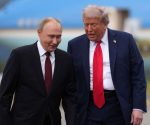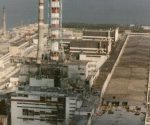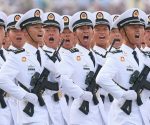The capital city with only 3 buildings and no residents | World | News
Surrounded by dense jungle and rolling hills on the picturesque island in the Pacific Ocean lies a capital city unlike any other in the world. Ngerulmud stands as the capital of the Micronesian island nation of Palau, but is home to no bustling streets, no homes, and no residents – only a single government complex.
Built in 2006 to replace the former capital of Koror, Ngerulmud on the island of Babeldaob was meant to symbolise Palau’s independence from the US. However, nearly two decades later, it remains the only capital in the world without a population. The only structures in sight are three pale-yellow government buildings – housing its executive, legislative and judicial branches – connected by broad walkways and empty car parks. Government employees drive in from nearby villages in the state of Melekeok or from Koror, 12 miles away. Even Ngerulmud’s post office, opened to serve the new seat of power, shut down due to lack of use.
The decision to move the capital inland was ambitious. Funded largely by loans from Taiwan, the project aimed to create a central seat of government closer to the country’s geographic centre. However, building here proved costly, and with no private housing or commercial development, Ngerulmud never drew permanent residents.
Palau’s small population of just under 20,000 remains concentrated in Koror – home to nearly 70% of residents. The island offers conveniences Ngerulmud lacks, with stores, schools, restaurants and access to tourism jobs.
The closest thing Ngerulmud has to a resident is its officials and politicians, namely a president, a vice-president, seven ministers, sixteen congressmen, and thirteen senators.
The capital’s name references a nearby hill where, according to local tradition, women gathered to offer “mud” to the gods. Mud referred to a type of fish, the pygmy angelfish (Centropyge tibicen), endemic to the Indo-Pacific region. Thus, the capital’s name can be translated as the place of the fermented angelfish.
Despite standing empty, Ngerulmud still plays an important part in life in Palau. Palau’s history stretches back thousands of years, with Micronesian peoples settling the islands long before any contact with Europe. The islands were first sighted by Europeans in the 16th century and later colonised by Spain, which sold them to Germany in 1899. After World War 1, Japan took control under a League of Nations mandate.
Following Japan’s defeat in World War 2, the islands came under US administration as part of the UN Trust Territory of the Pacific Islands.
Palau chose a different path from the rest of Micronesia, negotiating its own Compact of Free Association with the US. After years of referendums and constitutional revisions, Palau officially became independent in October 1994, making it one of the world’s smallest and youngest sovereign nations.
The Republic of Palau consists of approximately 340 islands and is the western part of the Caroline Islands, while the eastern and central parts make up the Federated States of Micronesia. Its total area is 180 square miles, making it the sixteenth smallest country in the world. Indonesia lies to its south, and the Philippines to the northwest.










